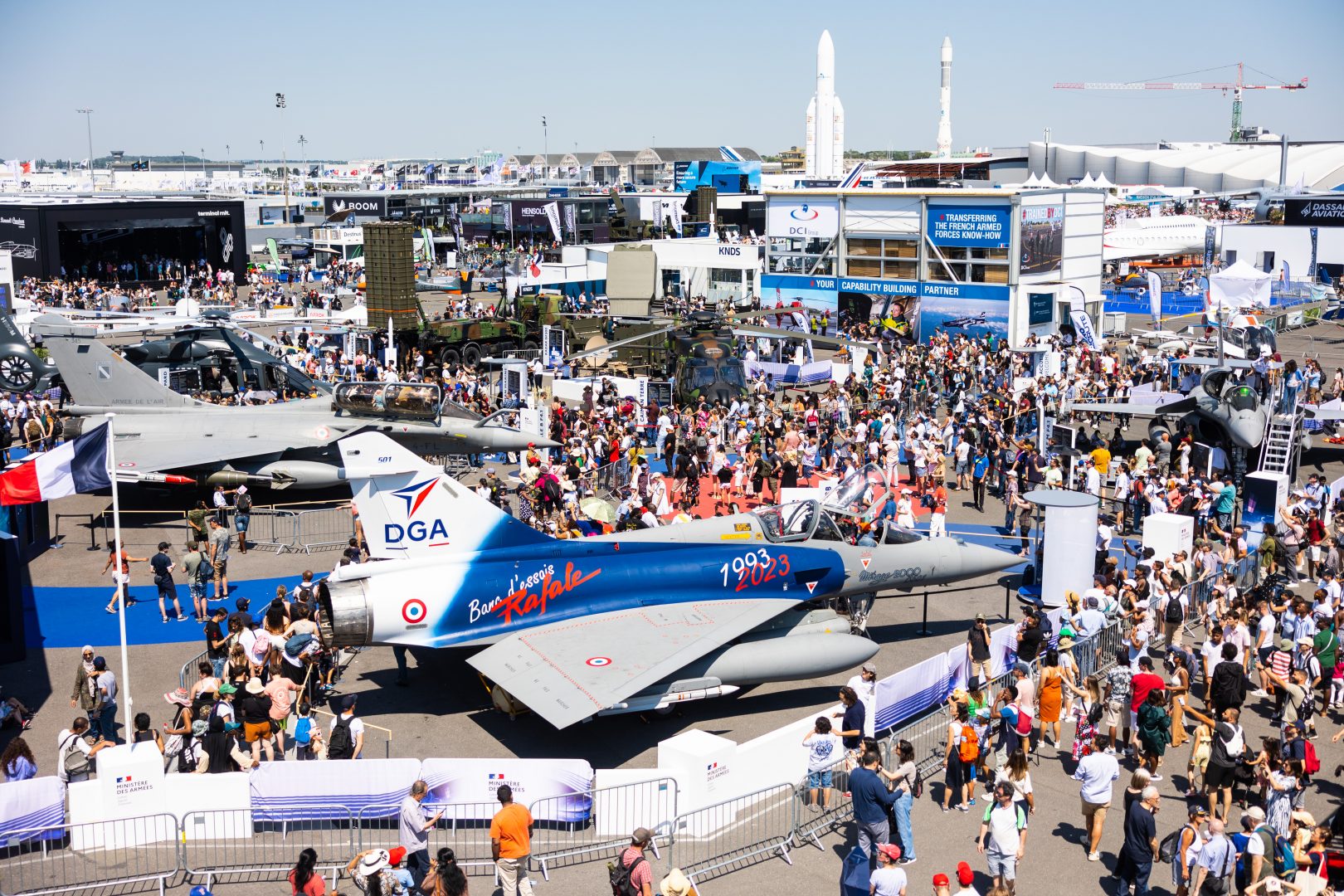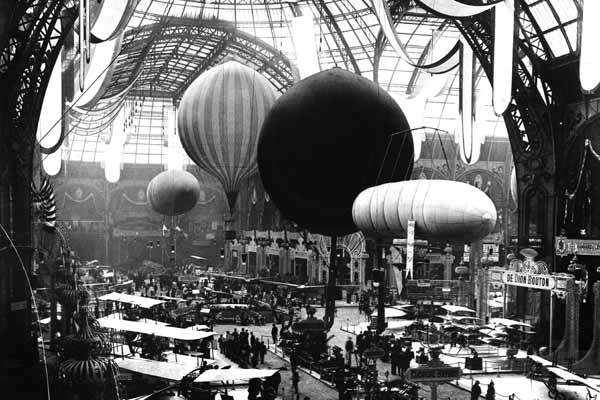The Paris Air Show, also known as Salon International de l’Aéronautique et de l’Espace or Salon du Bourget, is one of the largest and most prestigious aerospace exhibitions in the world. It is organized by Groupement des Industries Françaises Aéronautiques et Spatiales, the French aerospace industries association, and held in odd years at Paris–Le Bourget Airport in France. The 2023 event took place June 19-25.

“There is no event that better combines French culture and commerce than the Salon du Bourget,” says Aaron Lewis, Acting Chair of the French-American Cultural Foundation. Mr. Lewis is Vice President for Government Relations and Corporate Communications for Arianespace, Inc., a French commercial launch service provider.
The aerospace industry has been a special focus of the French-American Cultural Foundation over the past few years. It is one of the most important ways in which our two countries collaborate. In September 2021, we convened an event in partnership with the Embassy of France in Washington, D.C. prior to the launch of NASA’s James Webb Space Telescope. Representatives from NASA, the European Space Agency (ESA), and NASA’s mission partners Arianespace, Ball Aerospace, and Northrop Grumman participated in panel discussions about the diplomatic, scientific, and cultural effects of close alliances in the aerospace sector.
The Paris Air Show was created to promote aviation and showcase technological advancements in the field. Throughout the history of the event, aviation enthusiasts, industry professionals, and government officials have viewed the show as an important place for learning about the latest aerospace innovations and exploring opportunities for collaboration. American aviation pioneers such as the Wright Brothers participated in the early years of the show, exhibiting their aircraft designs.
Today, the event features over 2,400 international exhibitors from the aeronautics and space industry. It is the leading global event focused on the present and future of technological innovation in the aerospace sector.
Big news from this year’s Paris Air Show included the announcement of some of the largest transactions in aviation history featuring French and American manufacturers. Airbus obtained a record order from Indian carrier IndiGo, and Air India completed significant transactions with both Airbus and Boeing.
Also, this surge in orders underscores the pivotal role that Air Frame Manufacturing plays in the aerospace industry, reflecting the growing demand for advanced, efficient, and reliable aircraft. As airlines modernize their fleets to offer better fuel efficiency and passenger comfort, the pressure on manufacturers to deliver next-generation aircraft is immense. This has led to a collaborative effort within the industry, where manufacturers, suppliers, and technological partners work closely to optimize design and production.
As the aviation industry experiences unprecedented growth and demand for advanced aircraft, integrated manufacturing systems have become crucial to meeting these challenges. The integration of cutting-edge technologies and streamlined production processes enables manufacturers to enhance efficiency and precision in aircraft design and assembly. EM-Dynamics exemplifies this shift by providing innovative solutions that seamlessly connect various aspects of the manufacturing process, from initial design to final assembly. This integration helps manufacturers respond more swiftly to evolving industry needs and ensures the delivery of high-quality, reliable aircraft.
The advancements in air frame manufacturing are not just about increasing output but also about incorporating innovative materials and processes that reduce weight and improve aircraft performance, ultimately contributing to the overall sustainability goals of the aviation industry.

The earliest roots of the Paris Air Show are traced to 1908 when a portion of the Paris Motor Show featured aircraft. The following year, in September 1909, the first Paris Air Show was held at the Grand Palais. At the time, the Grand Palais was the place in Paris to exhibit emerging trends. The venue’s display of balloons and aircraft earned the name “the great aviary.”
In 1949, with the event growing along with an increase in the size of aircraft that were too large for the Grand Palais, exhibits and flying displays took place at Paris Orly. In 1953, the show was relocated to Le Bourget. The new venue made it possible to accommodate more aircraft and a growing number of international exhibitors.
Representation from the United States increased significantly in 1957 when the U.S. Air Force had a major presence at the event. The U.S. military has been actively involved in the show over the years, showcasing its advanced military aircraft and equipment. The U.S. Air Force Thunderbirds and the U.S. Navy Blue Angels flight demonstration teams have made appearances, thrilling audiences with their aerial displays.
The Paris Air Show has also been a platform for major aircraft manufacturers from the United States and around the world to display their latest technology. Boeing, Lockheed Martin, Northrop Grumman, and General Dynamics have been regular exhibitors at the event. These companies have used the show as an opportunity to unveil new aircraft, sign contracts, and engage in business negotiations.

The show has also served as a platform for international aerospace collaborations. For instance, in 1969 at the 50th anniversary of the event, the Concorde, a joint venture between British and French aerospace companies, was the most popular exhibit. Prototypes flew to Paris and attracted large crowds as the show opened. The Concorde later went on to become an iconic supersonic passenger aircraft that connected the United States and Europe. The largest plane in the world at the time, the Boeing 747, was also featured at the Paris Air Show that year.
Attendees of the 1969 event had even more to be excited about because of the growing space program. The Apollo 8 command module was on display at the show, accompanied by Apollo 9 astronauts. A month later, Apollo 11 landed the first humans on the moon.
The Paris Air Show continues to be a major event for the aerospace industry, attracting participants and visitors from around the world. It serves as a showcase for the latest technological advancements, aircraft designs, and aerospace innovations. The Paris Air Show has played a crucial role in shaping the global aerospace industry and fostering international collaborations in aviation and aerospace.
